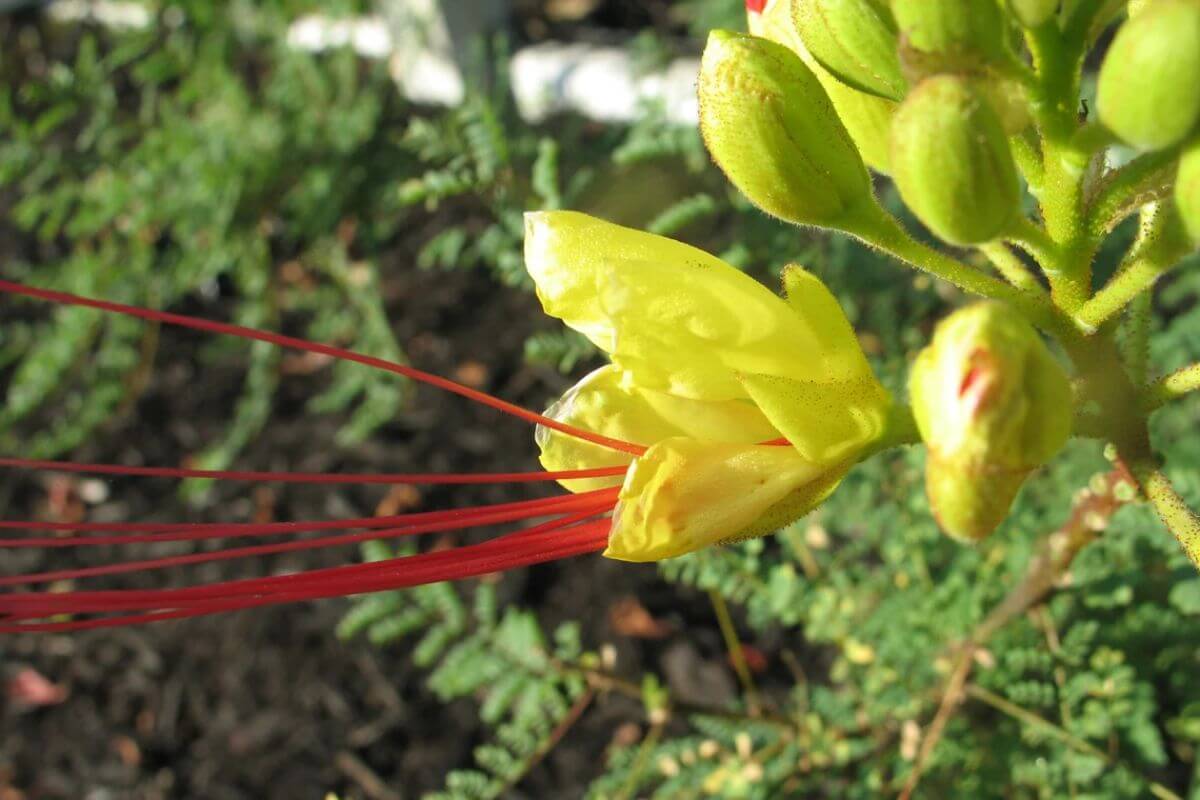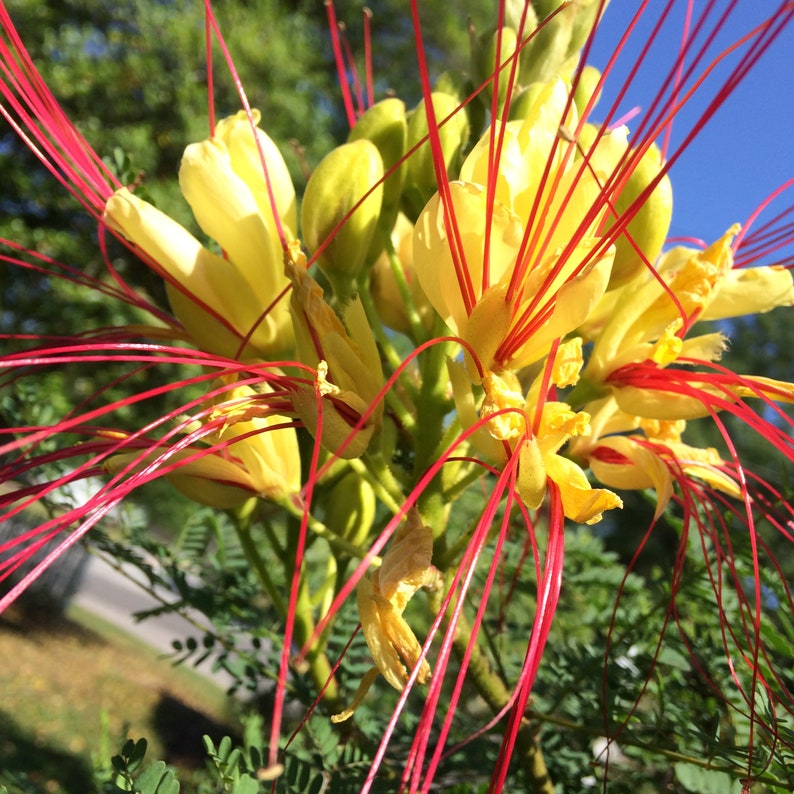Is your garden looking a little dull? The vibrant and easy-to-grow Yellow Bird of Paradise could be just what it needs. This tropical plant with beautiful yellow flowers and striking red stamens thrives in tropical regions. It can grow into a small tree or eye-catching shrub ideal for your home garden.
I’ll walk you through a couple of things about growing this yellow beauty, including soil and light requirements and essential care tips. You’ll learn about how to protect it from pests and diseases and how to water it properly.
The Yellow Bird of Paradise is a great way to add a tropical touch to your garden without hassle. Learn more about how it can transform both your indoor and outdoor areas.
- Related article: Bird of Paradise Plant Types
7 Key Takeaways on the Yellow Bird of Paradise
- The Yellow Bird of Paradise or Caesalpinia gilliesii is a South American plant that differs from the more common Orange Bird of Paradise.
- The Yellow Bird of Paradise thrives best in tropical climates, which is why you’ll often find it growing in the southern parts of the United States.
- The Yellow Bird of Paradise typically blooms from July to August, producing bright yellow flowers and red stamens.
- The Yellow Bird of Paradise requires well-drained soil and sufficient direct sunlight to grow well. The soil has to have a pH between 5.5 and 6.5 to be ideal. The plant will also need about 6 hours of direct sunlight daily.
- The Yellow Bird of Paradise can tolerate drought well once mature. However, it should still benefit from regular watering as it is growing.
- You can propagate the Yellow Bird of Paradise by collecting its seeds during the fall. Propagation of this plant can also be done using softwood stem cuttings during the summer.
- The Yellow Bird of Paradise can be toxic to your pets — particularly dogs and cats. Make sure you place them carefully in your garden so they don’t get accidentally ingested by your furbabies.
What Is the Yellow Bird of Paradise?
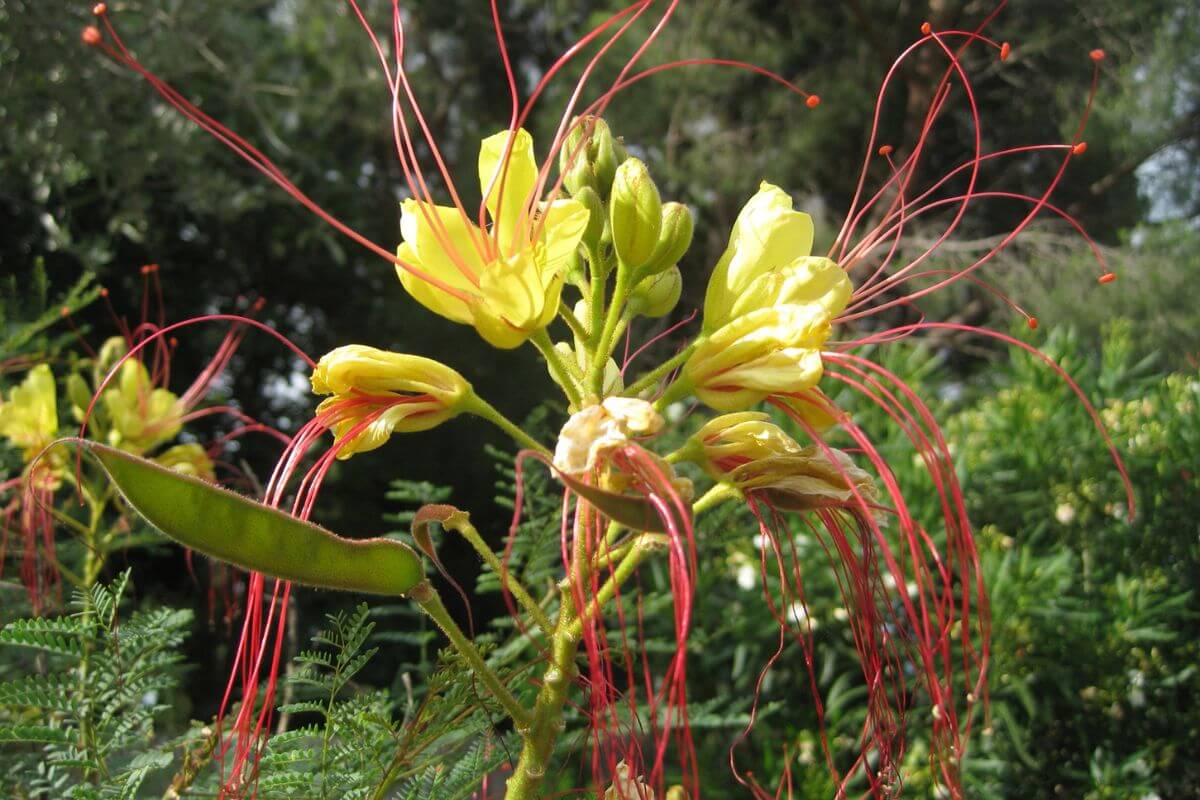
| Scientific Name | Habitats Around the World | Habitats in the U.S. | Nicknames | Description |
|---|---|---|---|---|
| Caesalpinia gilliesii | Argentina, Uruguay | Southern states and western areas of Oklahoma, Nevada, and California | Bird of Paradise Bush, Desert Bird of Paradise, Barba de Chivo | Evergreen shrub or small tree, blooms in July and August, flowers yellow with red stamens, 6-10 ft tall, 3-8 ft wide |
The Yellow Bird of Paradise or Caesalpinia gilliesii is an evergreen shrub or small tree native to the subtropical regions of South America, principally Argentina and Uruguay. It is also referred to as the Bird of Paradise Bush, the Desert Bird of Paradise, and the Barba de Chivo.
Often confused with the Orange Bird of Paradise (Strelitzia reginae), the Yellow Bird of Paradise variety is a separate plant and not related to the Strelitzia genus. Its lovely tropical flowers are characteristically yellow with red stamen.
The Yellow Bird of Paradise is often seen in the warmer states of the U.S. including the southern states. You can also find it in the western areas of Oklahoma, Nevada, and California. It can grow to a height of six to ten feet and spread to a width of three to eight feet.
The plant blossoms feature five yellow petals and ten vividly red stamens. Its flowers bloom at the end of branch tips during July and August. They grow to about an inch long with striking red stamens three or four times their length.
The shrub grows flat, curved pods that measure two to five inches. They’re covered with reddish hairs and measure two to five inches. Upon maturity, the pods split open and scatter seeds far and wide that they become invasive.
Yellow Bird of Paradise Care Guide
Proper care is essential for the Yellow Bird of Paradise to ensure it stays healthy and continues to brighten up your garden. Let’s explore the steps you need to take to keep the Caesalpinia gilliesii thriving.
Soil and Light Requirements for the Yellow Bird of Paradise
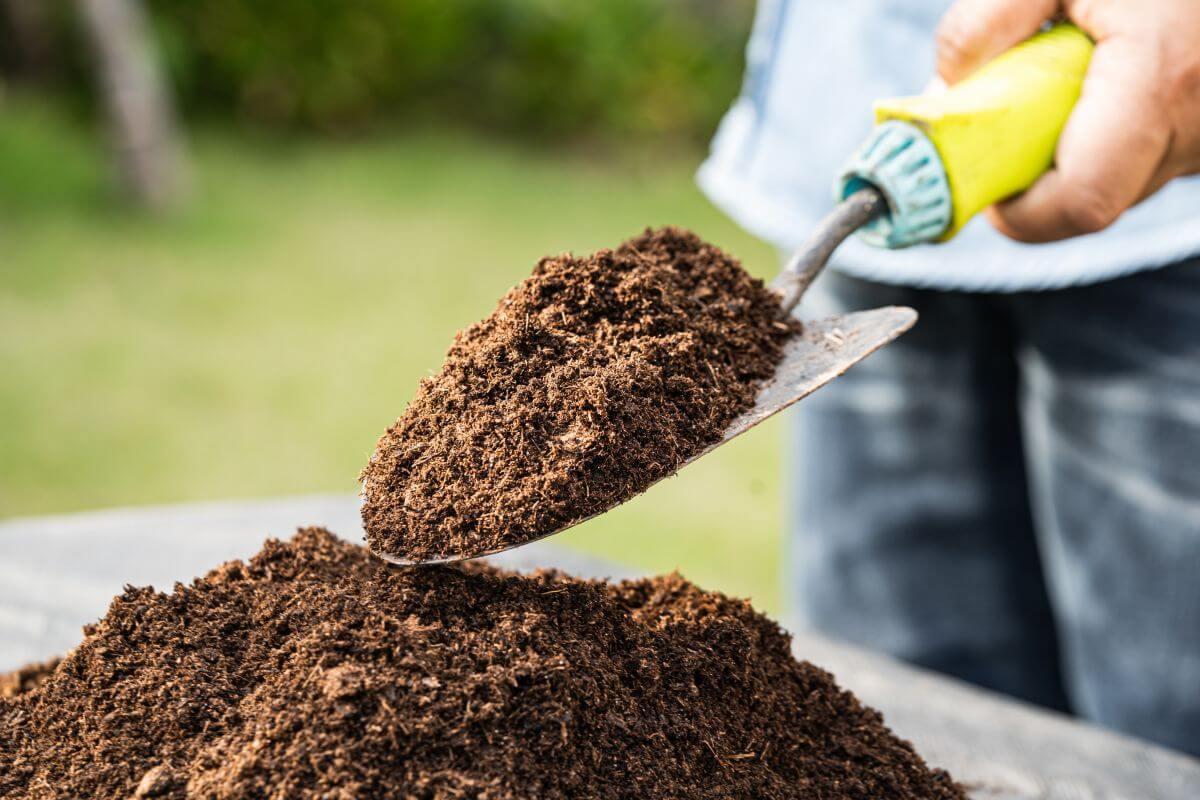
The Yellow Bird of Paradise needs loamy or sandy soil and 6 hours of direct sunlight daily to grow well. Sandy or loamy soil has the quality of being well-drained, which prevents water from sitting around and potentially causing root rot.
You’ll also want soil that has between a 5.5 and 6.5 pH range — slightly acidic to neutral pH. This allows the plant to absorb nutrients from the soil effectively.
Six hours of direct sunlight daily helps the Yellow Bird of Paradise produce those bright flowers you want to see in your garden. It should be fine to give the plant some shade but know that it won’t bloom well without adequate light.
If you give the plant the right soil and plenty of sunlight, it will grow well and add bright colors to your garden.
Water and Humidity Requirements for the Yellow Bird of Paradise
A weekly watering once the Yellow Bird of Paradise establishes itself in the soil bed will be sufficient. This is a hardy plant that is drought tolerant.
When first planted, the soil should be kept consistently moist. Make sure to water deeply when the plant is producing flowers for the entire blooming period.
The plant also thrives best in low-humidity conditions and doesn’t need high humidity. The typical humidity levels found indoors are usually adequate for this plant’s needs.
Temperature Requirements for the Yellow Bird of Paradise
The Yellow Bird of Paradise (Caesalpinia gilliesii) thrives in temperatures between 5°C (41°F) and 30°C (86°F) and can tolerate brief dips into the high 20s Celsius (around 77-82°F).
It grows best in USDA Zones 8-11 and might survive in Zone 7 if planted in a protected area. This plant prefers warm, sunny weather and does well in full sun, although it can handle a bit of light shade.
These temperature and climate conditions are perfect for the Yellow Bird of Paradise to grow strong and resilient.
Fertilizer Requirements for the Yellow Bird of Paradise
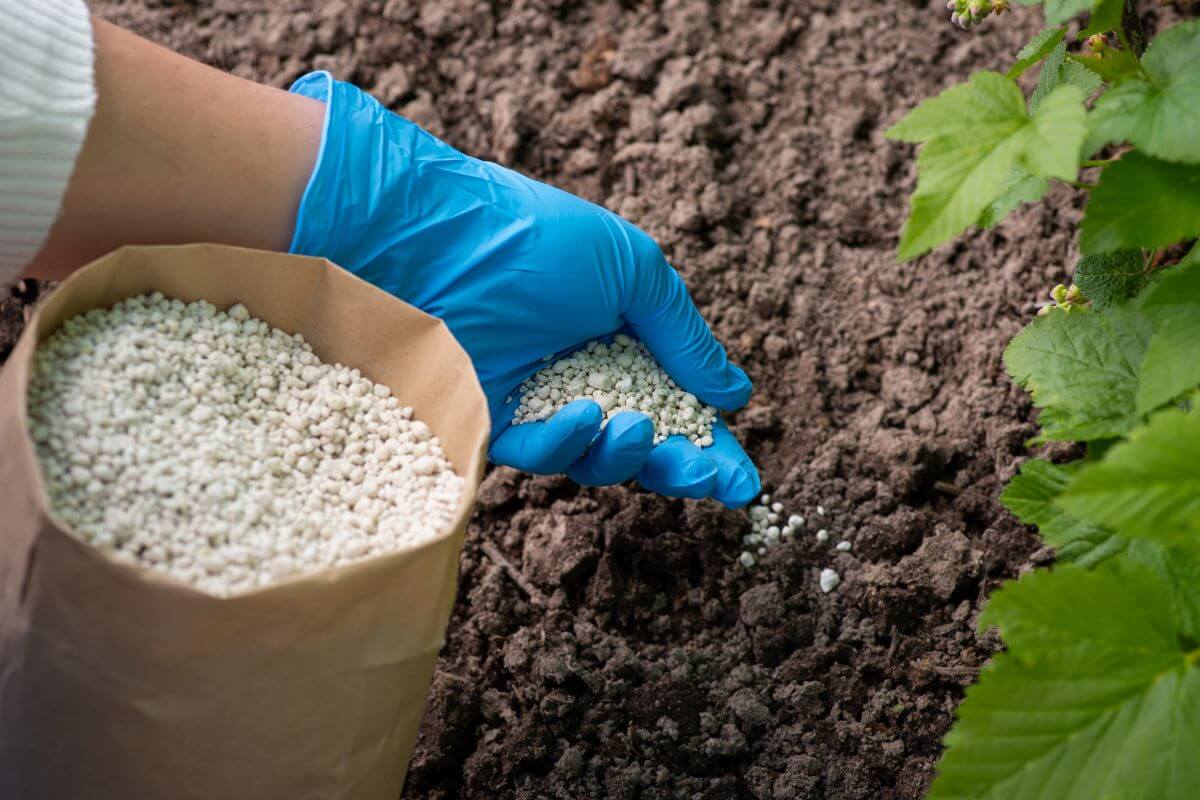
The Yellow Bird of Paradise, also called the Desert Bird of Paradise, grows better with special fertilizers. Organic fertilizers work well because they are natural and keep the soil healthy while providing the plant with essential nutrients.
Fertilize during the growing season when the Yellow Bird of Paradise is active. Follow the directions on the fertilizer package to avoid using too much. Use balanced fertilizers with equal parts nitrogen, phosphorus, and potassium (1:1:1 ratio) to help the plant stay strong.
Avoid fertilizing during the winter when the plant is resting. Watch for any signs that the plant isn’t getting enough or is getting too much of certain nutrients. Adjust how you fertilize to help the Yellow Bird of Paradise grow its best.
- Learn more about How to Feed Bird of Paradise
Pruning the Yellow Bird of Paradise
Pruning is generally minimal for your Yellow Bird of Paradise. While the plant can handle some trimming, it’s best to avoid cutting too much as it might change its natural shape.
If you do need to prune, it’s ideal to do so in spring or after the last frost. Focus on removing any dead, damaged, or frost-affected branches. Light pruning to shape the plant is fine, but avoid heavy pruning because it could negatively affect its growth and flowering.
Make sure to use clean, sharp tools and make cuts just above outward-facing buds or branches to keep your plant healthy and prevent disease.
Propagating the Yellow Bird of Paradise
The yellow variety can be propagated with softwood stem cuttings but is most often propagated in the spring through sowing seeds. The plant also self-sows when its seed pods open and drops seeds everywhere.
- Read more about How to Propagate Bird of Paradise Plants
How to Propagate Yellow Birds of Paradise by Seed
Here are the step-by-step instructions on how to propagate and grow the Yellow Bird of Paradise from seed:
- Gather the Seeds – Gather seeds in autumn from an established plant or obtain them from a garden center or nursery.
- Dry the Seeds – Dry the collected seeds in the sun. Once dried, store them in a sealed glass container in the refrigerator.
- Remove the Seeds Before Predicted Frost – Six weeks before your area’s last predicted frost, remove the seeds from the fridge and nick the seed coats slightly.
- Soak the Seeds – Soak the seeds in warm water for 24 hours. Discard any seeds that do not sink to the bottom of the bowl.
- Prepare Seed Starter Mix – Prepare a pot or container with drainage holes and fill it with a mix of seed starter growing medium and perlite (1:1 ratio).
- Plant the Seeds – Plant the seeds half an inch deep in the seed starter mix, spacing them two inches apart. Water lightly.
- Allow the Seed to Germinate – Cover the seed tray or container with plastic and place it in a warm location with a temperature of around 75°F to aid germination.
- Keep the Growing Medium Moist – Keep the growing medium moist, but avoid overwatering.
- Remove Plastic Cover From Container – Germination should occur within one to four weeks. Remove the plastic cover and place the tray in a sunny window or under a grow lamp.
- Transplant the Seedlings – Once seedlings have at least four leaves, transplant each into individual containers, preferably peat pots that can be planted directly into your garden bed without disturbing the roots.
- Increase Exposure to Outdoor Conditions – After the last frost, gradually expose your plants to outdoor conditions by placing them outdoors for a few hours daily, increasing exposure time gradually.
- Transfer Plants Into Garden Bed – When plants can tolerate at least six hours of outdoor exposure, transplant them into your garden bed.
How to Propagate Yellow Birds of Paradise Using Soft Wood Cuttings
To propagate the Yellow Bird of Paradise plants with softwood cuttings, follow these steps:
- In summer, use sterilized garden shears to cut six-inch sections of green branches that are flexible.
- Fill pots with moist coarse sand. Dip the tip of each cutting in rooting hormone and plant it in the sand.
- Cover each pot with loose plastic bags, securing them with rubber bands or ties.
- Place the pots in bright, indirect sunlight in a warm area.
- Check after about a month for new roots by gently tugging on the cuttings. If you feel resistance, roots have formed.
- Once roots are established, remove the plastic covers and continue caring for the cuttings until they can be moved to permanent pots or placed in your garden.
Is the Yellow Bird of Paradise Toxic to Pets?
According to the American Society for the Prevention of Cruelty to Animals website, the Yellow Bird of Paradise is toxic to cats and dogs and is more toxic than the Strelitzia reginae. Rabbits can be especially vulnerable with death being reported after ingestion.
Exposure to the plant’s toxins can lead to several symptoms:
- Immediate irritation and burning sensations in the mouth, tongue, and lips.
- Coordination difficulties and impaired movement due to effects on the nervous system.
- Excessive salivation or drooling as a response to throat and mouth irritation.
- Irritation of the digestive system, resulting in diarrhea
- Mild feelings of nausea or discomfort from ingesting toxic compounds.
- Significant oral irritation, affecting the gums and throat upon direct contact.
- Difficulty or pain while swallowing due to severe mouth and throat irritation or swelling.
- Vomiting, since the body’s natural response to expel toxic substances from the stomach and digestive tract
In case of ingestion, contact your veterinarian or local poison authority immediately.
Yellow Bird of Paradise Pests and Diseases
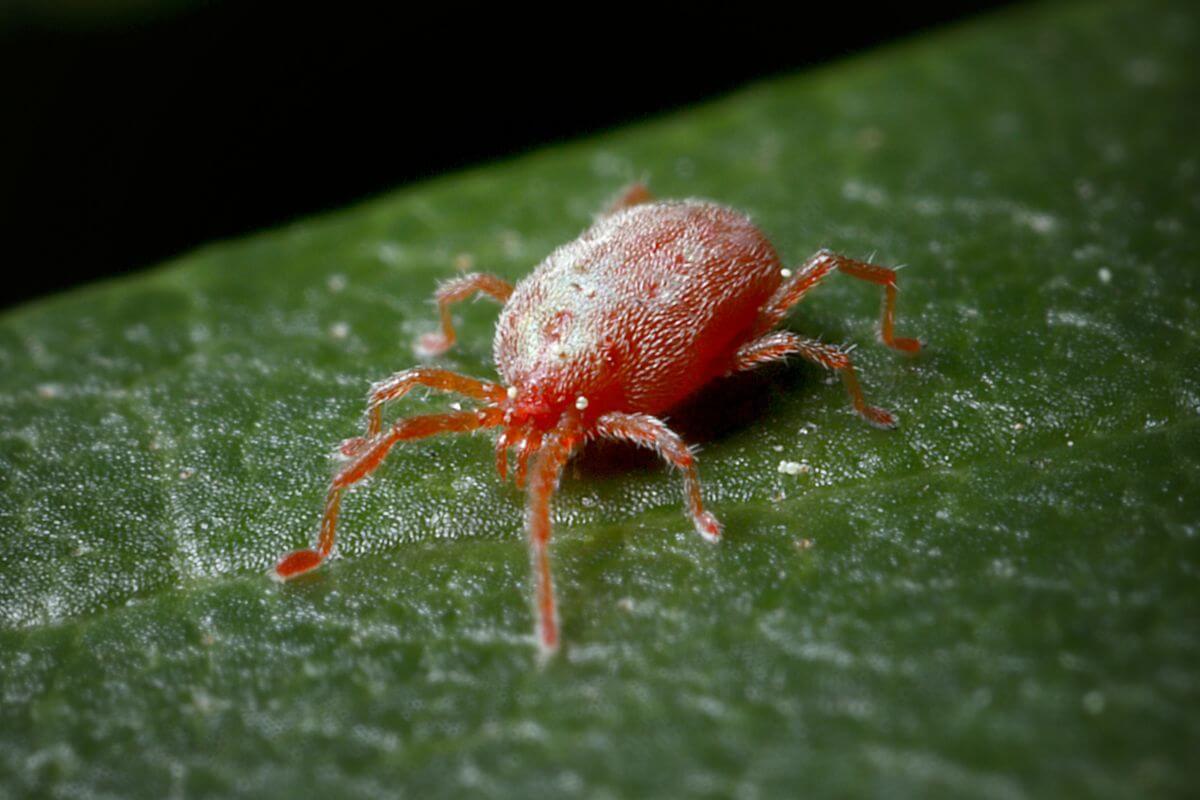
Leafcutter ants pose a significant threat to this plant by cutting and removing parts of it, which can hinder its growth.
Red spider mites also present a problem by feeding on the leaves, causing them to appear spotted. Severe infestations can lead to leaf loss.
Fungal diseases such as Pythium and Phytophthora can also affect the plant, especially in poorly drained soil, leading to root rot and other issues. Ensuring proper soil drainage is important for preventing these diseases.
Yellow Bird of Paradise Final Thoughts
You can achieve a colorful garden by adding Birds of Paradise flowers, particularly the Yellow Bird of Paradise. It has yellow and red color tones that are emphasized under direct sunlight. Remember not to mistake this plant for its more common cousin, the Orange Bird of Paradise.
Don’t worry about caring for your Yellow Bird of Paradise — there’s almost nothing to it! The plant grows well in soil that is well-drained and loves to soak up 6 hours of sun daily.
It’s known to tolerate drought well once mature, but make sure to water it regularly while it’s growing. This allows your plant to bloom and flourish. When it comes to pests, you’ll want to keep a close eye on red spider mites and leafcutter ants since they can ruin your gorgeous plant.
Give your Yellow Bird of Paradise ideal care and attention and it’ll surely bring beauty to your indoor or outdoor space.
Yellow Bird of Paradise FAQs
1. What Are the Other Names for the Yellow Bird of Paradise?
Here are some other names for the Yellow Bird of Paradise plant (Caesalpinia gilliesii):
- Poinciana gilliesii
- Desert Bird of Paradise
- Yellow Mexican Bird of Paradise
- Cat’s Claw
2. Are There Two Types of Yellow Bird of Paradise Plants?
There are two types of plants known as “Yellow Bird of Paradise”: Caesalpinia gilliesii, a shrub native to Argentina and Uruguay with bright yellow flowers and red stamens, resistant to pests but susceptible to drought and leafcutter ants.
Strelitzia reginae ‘Mandela’s Gold’ is a South African cultivar of Bird of Paradise with yellow flowers, slower-growing and less common than the orange variety.
3. Are Seeds From the Yellow Bird of Paradise Poisonous?
Caesalpinia gilliesii ripe seeds are considered poisonous and harmful to both humans and animals if ingested. It’s important to handle and store them with care, especially around children and pets, to avoid accidental ingestion.
Here are other Bird of Paradise articles you may be interested in:


